From Common Harebell To Milky Bellflower – Here’s 15 Colourful Campanula
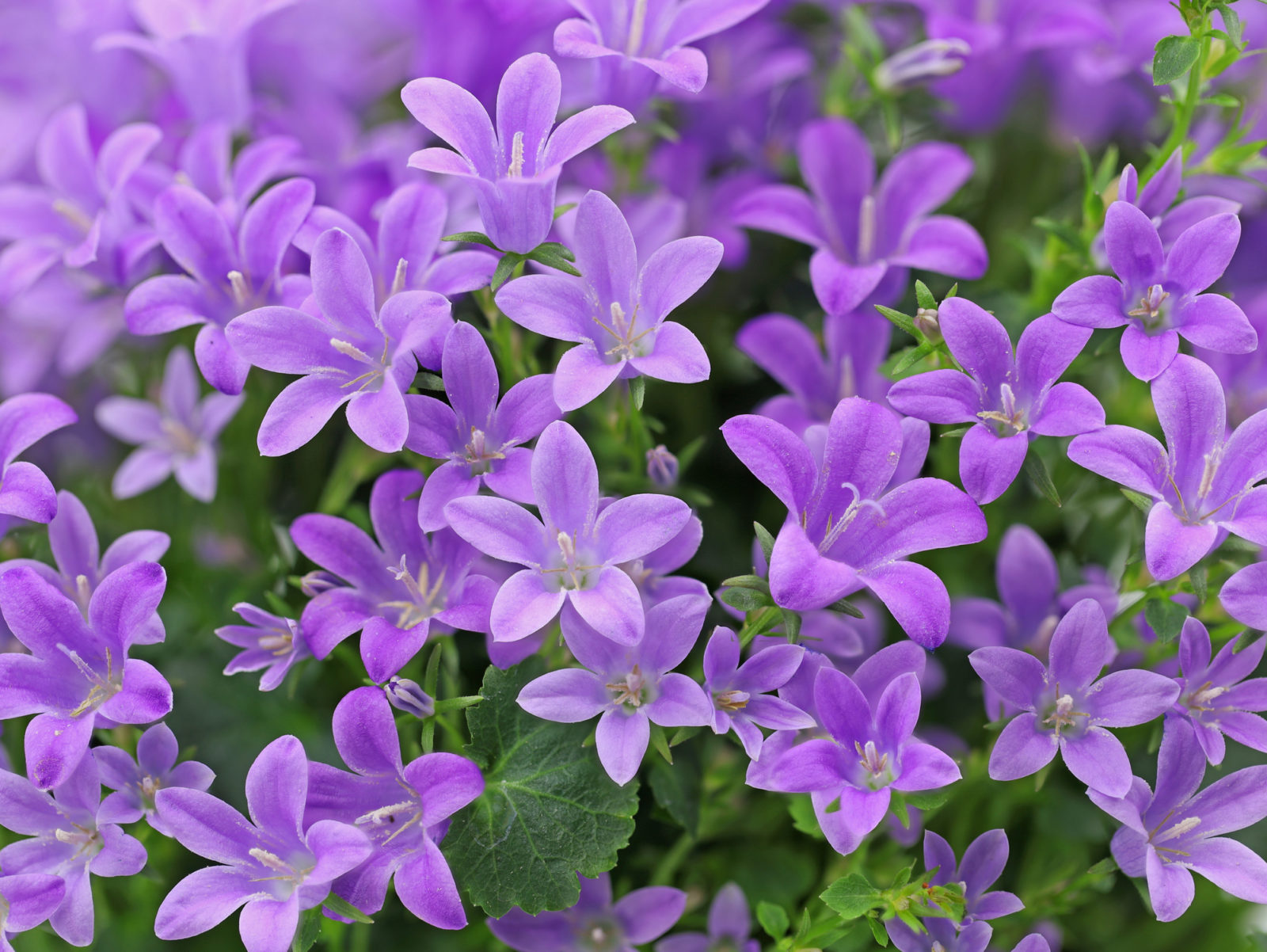
PERENNIALS > CAMPANULA > VARIETIES
Reviewed By COLIN SKELLY

Colin is a Horticulturist and Horticultural Consultant with experience in a range of practical and managerial roles across heritage, commercial and public horticulture. He holds the Royal Horticultural Society’s Master of Horticulture award and has a particular interest in horticultural ecology and naturalistic planting for habitat and climate resilience.
IN THIS GUIDE
CAMPANULA GUIDES
Cuttings Propagation
Deadheading
Division
Growing From Seed
Varieties
Easy to grow and an absolute joy to behold, it’s no surprise that bellflowers, or campanulas, are a common sight in cottage gardens and border displays across the United Kingdom.
Distributed across much of the Northern Hemisphere and often found in woodland areas, they’ll cope with most soil types and climates with ease, providing the terrain doesn’t become waterlogged.
Despite the name, they come in many different shapes and colours, meaning there’s an option to suit all aesthetics.
In fact, there are over 400 different types of campanulas to choose from.1The BRAHMS Project, University of Oxford, Department of Plant Sciences. (n.d.-d). Campanula species. Oxford University Plants. Retrieved March 13, 2023, from https://herbaria.plants.ox.ac.uk/bol/plants400/Profiles/cd/Campanula
Listing all of them would be difficult, so I’ve whittled this list down to my favourite fifteen.
All of the varieties on this list can be grown in full sun or partial shade and are unfussy with regard to exposed or sheltered conditions.
1) C. portenschlagiana
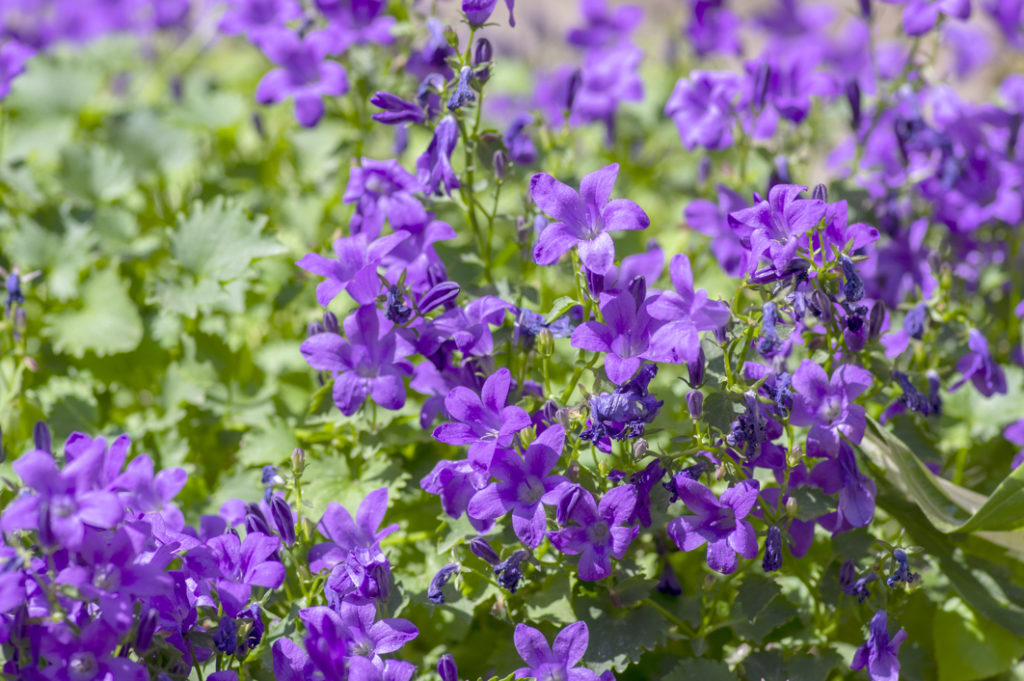
- COMMON NAME(S): Wall Bellflower / Adria Bellflower
- HARDINESS RATING: H5
- FLOWERS: Purple
- FLOWERING SEASON(S): Summer
Holder of an Award of Garden Merit from the RHS, this universally popular specimen is better known as the Dalmatian bellflower.
The moniker is nothing to do with dogs, however, but rather with the region of Croatia from where it originates.2Campanula portenschlagiana: Adria Bellflower. (n.d.). NBN Atlas. Retrieved March 13, 2023, from https://species.nbnatlas.org/species/NHMSYS0000456767
With mat-forming tendencies and evergreen lush foliage, C. portenschlagiana bursts into life each summer with cascading lavender blossoms.
Ideal for ground coverage in sunny borders.
2) C. rotundifolia
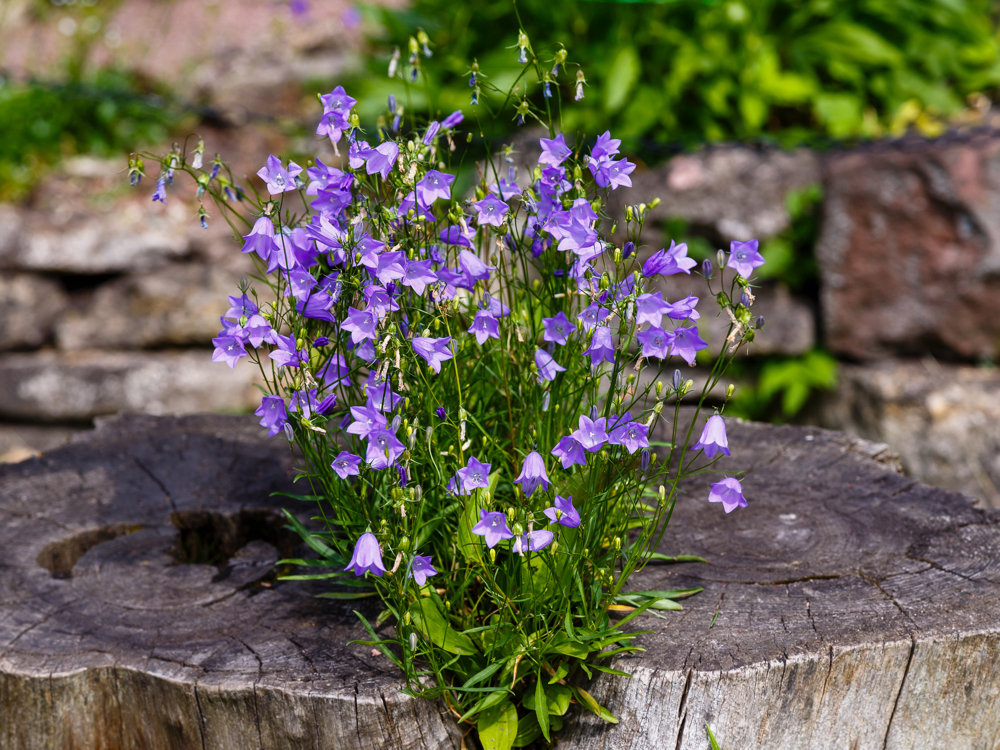
- COMMON NAME(S): Common Harebell / Scottish Bluebell
- HARDINESS RATING: H7
- FLOWERS: Blue
- FLOWERING SEASON(S): Summer
C. rotundifolia (colloquially known as the Scottish bluebell) is not precious about its growing conditions.
It flourishes in particularly dry or nutrient-rich soils but can grow elsewhere too.
Despite those humble beginnings, it’s still a bonnie sight to behold.
Flowering from midsummer to early autumn, it produces dainty bell-shaped blossoms that are just as attractive to pollinators as people.
3) C. poscharskyana
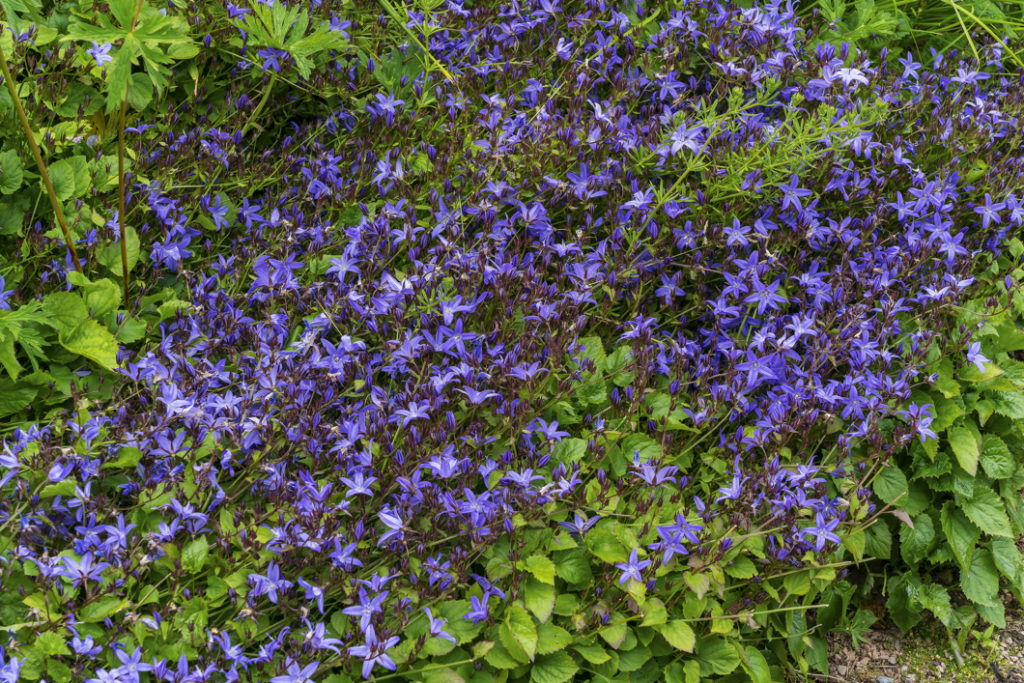
- COMMON NAME(S): Trailing Bellflower
- HARDINESS RATING: H5
- FLOWERS: Blue
- FLOWERING SEASON(S): Summer / Autumn
Variously known as the Serbian bellflower and the blue waterfall, this showstopper of a garden specimen produces an abundance of cascading lilac blossoms from spring onwards.
Each flower is a perfect star, both in shape and stature.
Nonetheless, it should be noted that the cultivar is considered invasive by some authorities.
If left to its own devices, it might colonise your garden, so keep a watchful eye on its development.
4) C. lactiflora

- COMMON NAME(S): Milky Bellflower
- HARDINESS RATING: H7
- FLOWERS: Blue and white
- FLOWERING SEASON(S): Summer
Nicknamed the milky bellflower, C. lactiflora produces attention-grabbing clusters of white star-shaped flowers that carry a purplish tinge to them.
This variety is particularly lovely in full bloom, though it does have a tendency to turn brown on fading.
As well as adding instant attraction to your garden, milky bellflowers are also practical little critters.
That’s because they’re anathema to pests like rabbits and deer, so you can rest assured the surrounding plants won’t be nibbled upon.3Campanula lactiflora. (n.d.). PFAF. Retrieved March 13, 2023, from https://pfaf.org/user/Plant.aspx?LatinName=Campanula+lactiflora
“Campanula lactiflora is one of my favourite bellflowers,” says Colin Skelly, a Horticulturist with nearly 15 years of experience in the industry.
“I find it grows well in many garden contexts (except full shade) and has a very long flowering season, especially if deadheaded: it’s not quite bullet proof but not far off.
“The only drawback is that, without deadheading, the faded flowers aren’t great to look at, but nobody’s perfect!”
5) C. pyramidalis
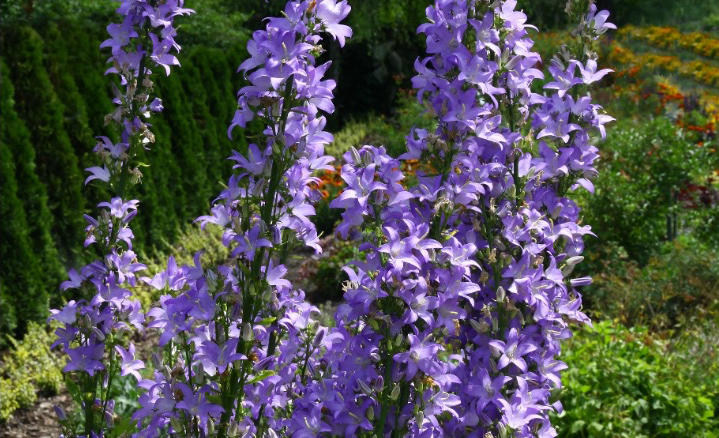
- COMMON NAME(S): Chimney Bellflower
- HARDINESS RATING: H4
- FLOWERS: Blue
- FLOWERING SEASON(S): Summer
The intriguing architecture of C. pyramidalis is what sets it apart from its brethren.
Tall spikes of tapered and jagged leaves produce strings of pale blue flowers in the height of summertime, making it the perfect choice for the rear of a garden border.
However, it’s not one of the longer-lasting specimens available and is best viewed as a biennial rather than a perennial.
6) C. carpatica
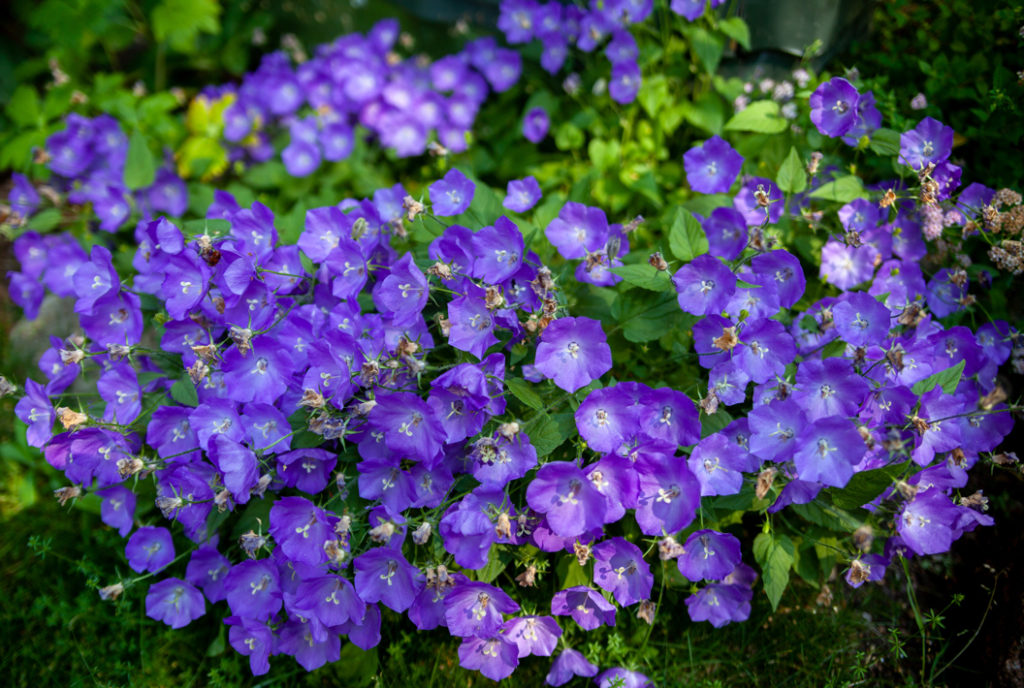
- COMMON NAME(S): Tussock Bellflower
- HARDINESS RATING: H5
- FLOWERS: Blue and white
- FLOWERING SEASON(S): Summer
One of the easiest alpine species of campanula to grow, the Carpathian harebell is robust and resilient enough to handle the UK climate with ease.
It’s immediately identifiable by the large and open structure of its flower heads, which come in brilliant whites and soft pastel blues, among other colours.
Pop a selection into the front of a border to add a splash of vibrancy among the foliage.
7) C. glomerata
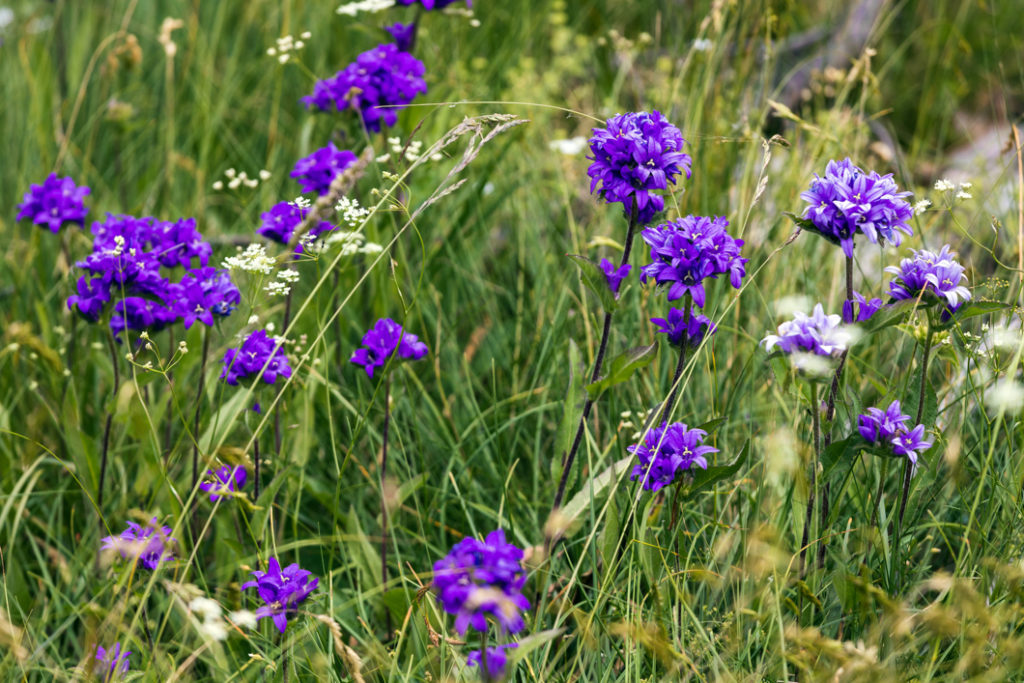
- COMMON NAME(S): Clustered Bellflower
- HARDINESS RATING: H7
- FLOWERS: Purple and blue
- FLOWERING SEASON(S): Summer
This devastatingly attractive specimen is commonly known as clustered bellflower and one glance should be enough to understand why.
Its upward-facing bell-shaped flowerhead only lasts for a matter of weeks in late spring and early summer – but it’s well worth it.
Capable of reaching just over 50cm in height, they’re absolutely at home in an informal cottage garden setting.
8) C. persicifolia
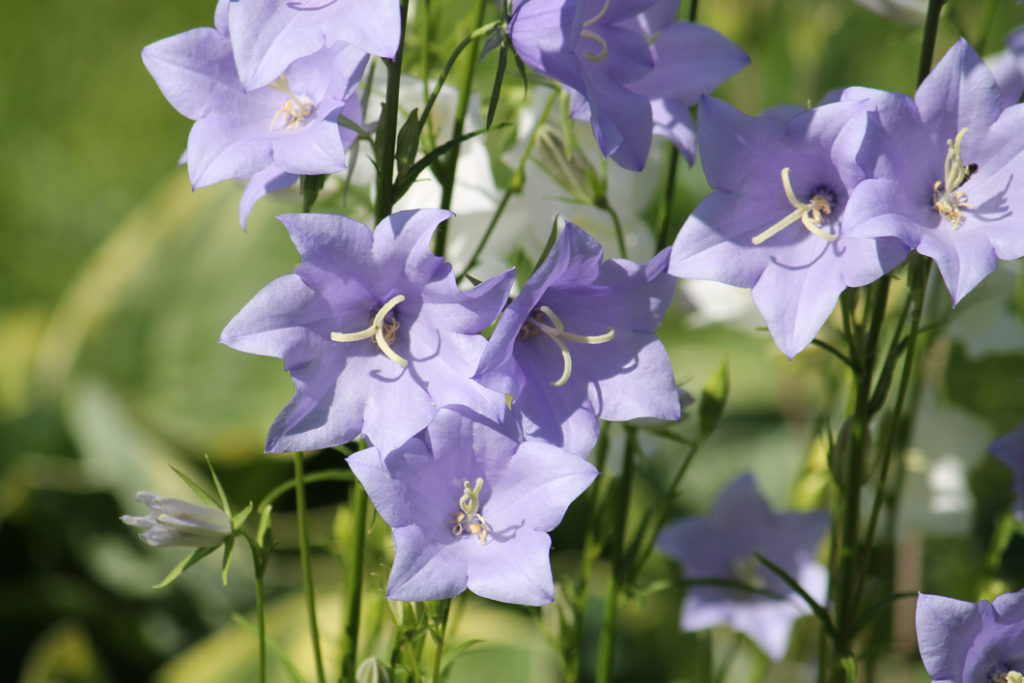
- COMMON NAME(S): Peach-leaved Bellflower / Fairy Bellflower
- HARDINESS RATING: H7
- FLOWERS: Blue
- FLOWERING SEASON(S): Summer
Despite its common name of peach-leaved bellflower, no part of this plant is actually peach in colour.
It remains extraordinarily popular all the same, likely due to its lengthy flowering season.
As for the blossoms themselves, they’re cup-shaped and lilac-blue in appearance, with the plant capable of reaching up to 1m in height.
C. persicifolia is unfussy about growing conditions but does not deal well with exposed sites and strong winds.
9) C. latifolia
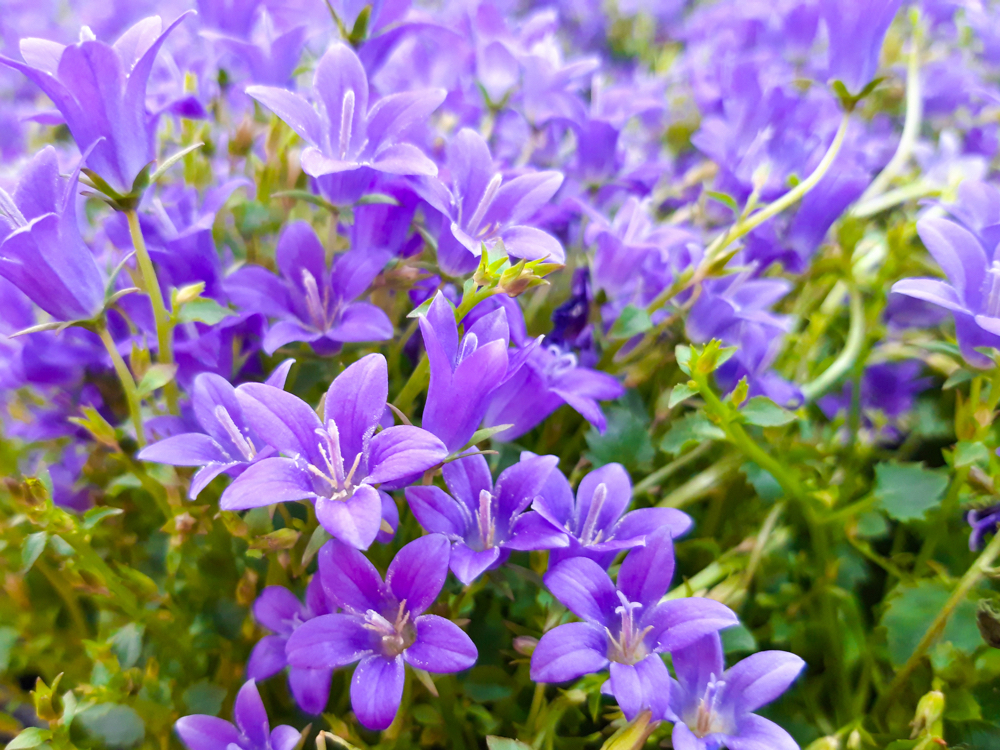
- COMMON NAME(S): Giant Bellflower / Broad-Leaved Bellflower
- HARDINESS RATING: H7
- FLOWERS: Purple and blue
- FLOWERING SEASON(S): Summer
With a maximum height of 1.2m, C. latifolia isn’t known as the ‘giant bellflower’ for nothing.
Its upright structure bears long, oval leaves and nodding flowers whose petals can reach 5cm in length alone.
With its blossoms most commonly appearing in light blue or violet, it’s best placed against similarly soft hues in shaded parts of the garden to accentuate its lovely attributes.
10) C. sibirica
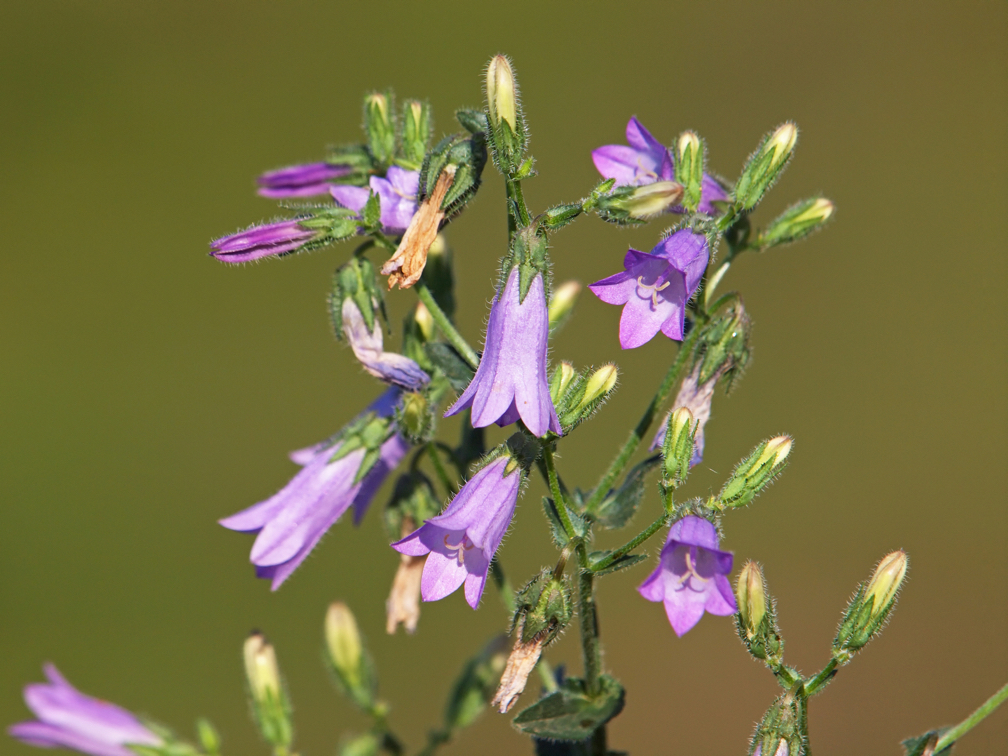
- COMMON NAME(S): Siberian Bellflower
- HARDINESS RATING: H5
- FLOWERS: Purple
- FLOWERING SEASON(S): Summer
We’ve already had Serbian bellflowers – now we have Siberian ones.
Native to the upper enclaves of the mountainous regions of Siberia and northern Iran, C. sibirica makes light work of even the worst British winters.4Campanula sibirica. (n.d.). Kew Royal Botanic Gardens. Retrieved March 13, 2023, from https://powo.science.kew.org/taxon/urn:lsid:ipni.org:names:141096-1
Of course, it’s summertime when it comes into its own, though.
The rough, hairy texture of its foliage and stems is in sharp contrast to the delicacy and daintiness of its bell-shaped blossoms during the warmer months.
11) C. takesimana
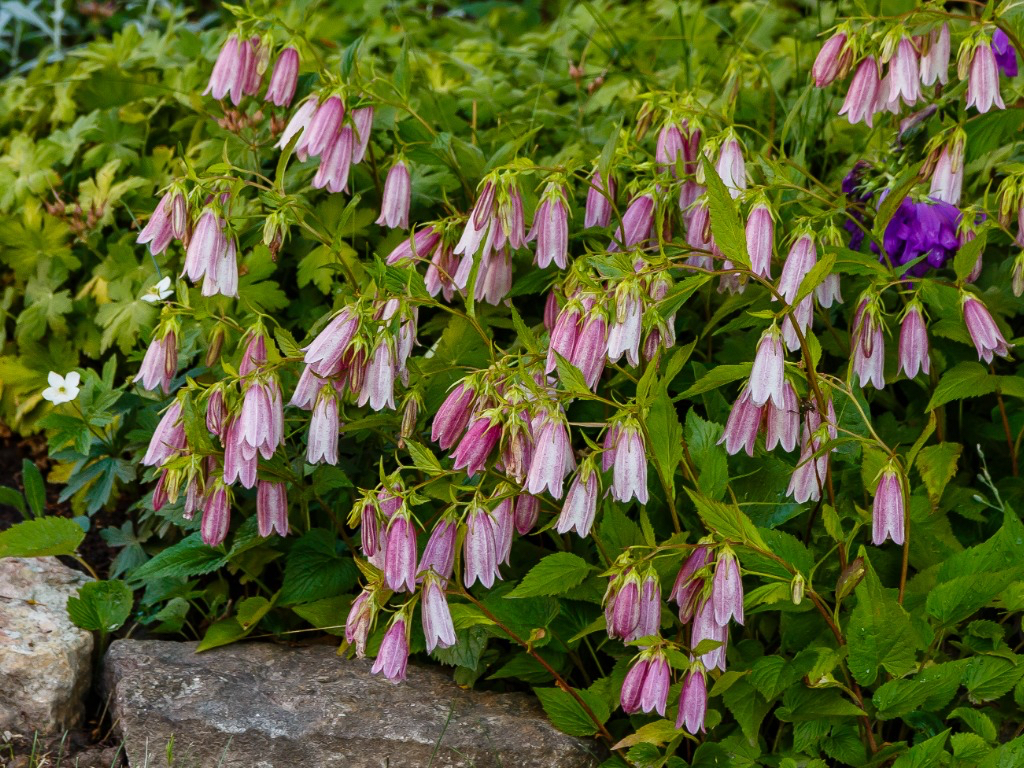
- COMMON NAME(S): Korean Bellflower
- HARDINESS RATING: H7
- FLOWERS: Cream, red, pink and white
- FLOWERING SEASON(S): Summer
With its sagging flowerheads and profoundly intense shades of pink, purple and white, Korean bellflowers are among the most striking of all campanulas.
The backdrop of vibrant green foliage serves as a pleasing contrast, only enhancing its appeal.
To top things off, C. takesimana comes with a delightful fragrance that’s bewitching to all passers-by.
It can be vigorous in its self-seeding habits, so keep it in check to prevent it from taking over your garden.
12) C. garganica
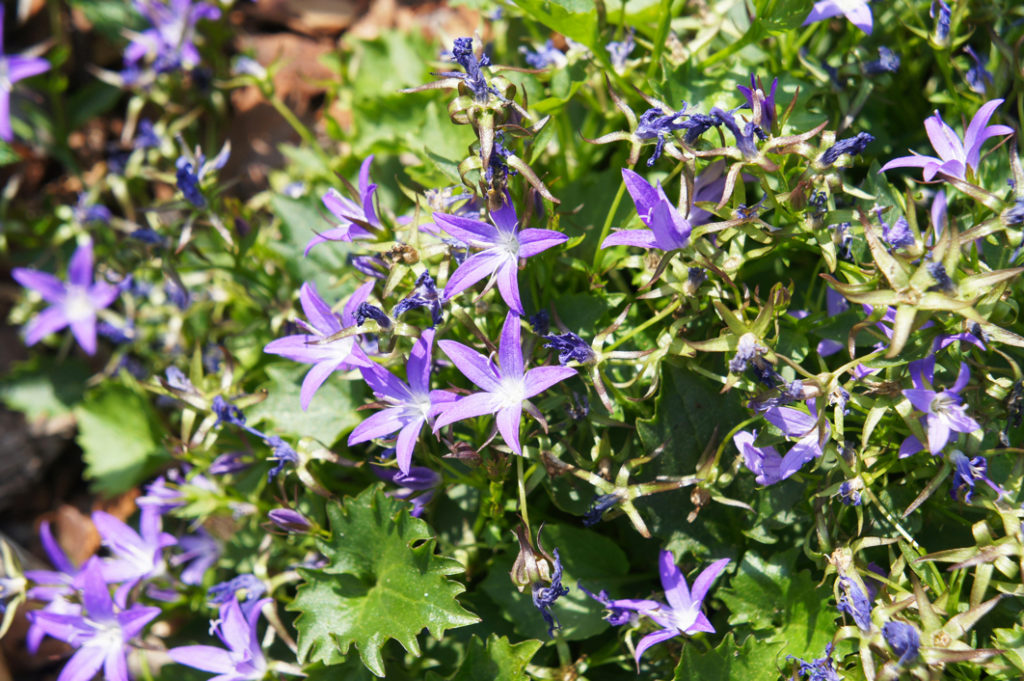
- COMMON NAME(S): Adriatic Bellflower
- HARDINESS RATING: H5
- FLOWERS: Blue
- FLOWERING SEASON(S): Summer
One of the few varieties on this list whose spread exceeds its height, the Adriatic bellflower forms cushions of bright green leaves in a distinctive heart shape.
Come summertime, however, that foliage will be all but invisible as it is smothered in mountains of blue or lilac star-shaped blossoms.
Although it reaches just 10cm in height, it will grow outwards quite quickly, so it’s best to give at least 25cm of space on either side of it to express itself fully.
13) C. medium
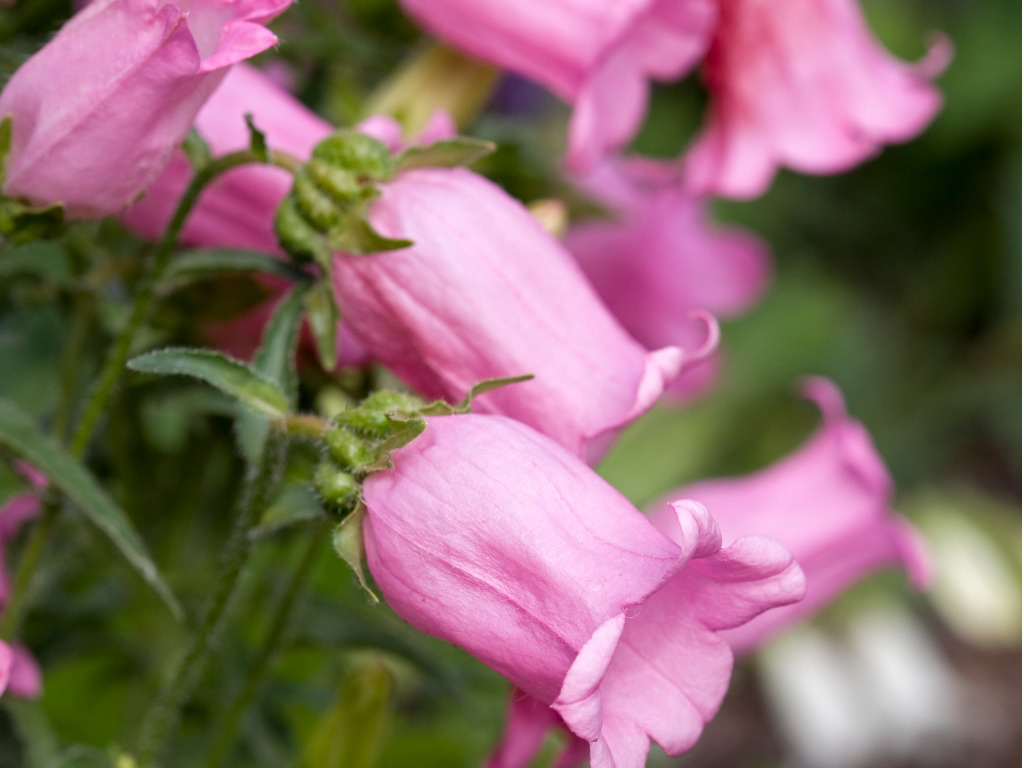
- COMMON NAME(S): Canterbury Bells
- HARDINESS RATING: H4
- FLOWERS: Blue, pink and white
- FLOWERING SEASON(S): Summer
Known as Canterbury bells, these hefty flowers are more large than medium.
The erect stalks are reddish-brown and hairy to the touch, while the short-stemmed, bell-shaped flowers which perch atop them are exquisite in both colour and shape.
They’re not demanding about their growing conditions or the attention you pay to them after establishment, even self-seeding prodigiously.
Nonetheless, they’re irresistible to butterflies and bees, so much so that some apiarists even use them to sweeten their honey products.
14) C. punctata
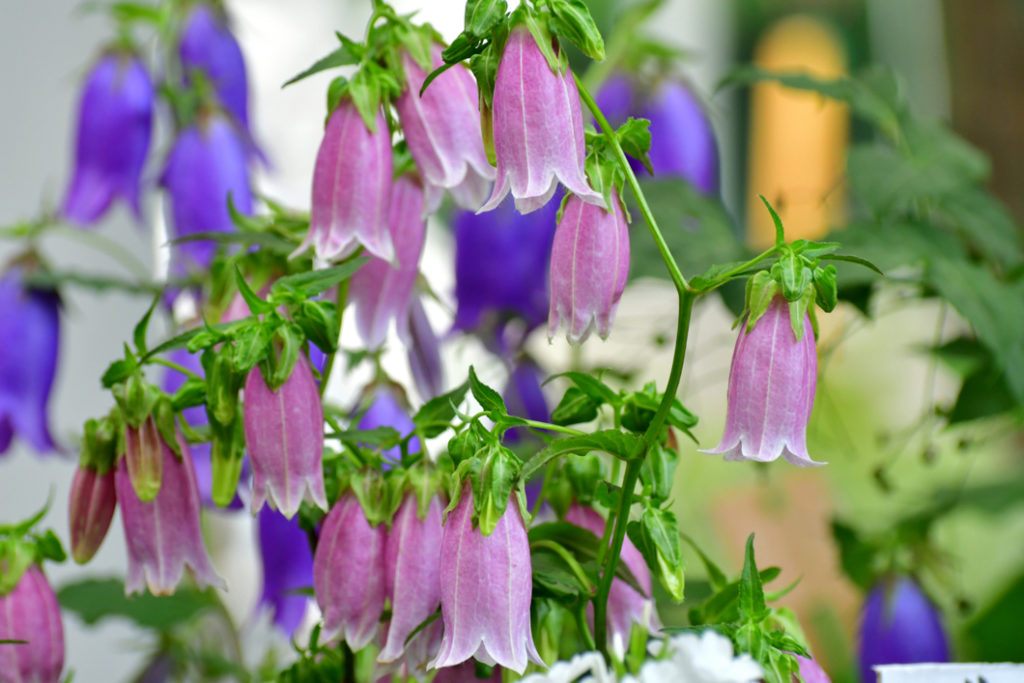
- COMMON NAME(S): Long-flowered Harebell / Spotted Bellflower
- HARDINESS RATING: H7
- FLOWERS: Blue, pink and white
- FLOWERING SEASON(S): Summer
A native of China, Japan and Siberia, C. punctata’s Latin name can be accurately translated into English as the spotted bellflower.5Campanula punctata. (n.d.). PFAF. Retrieved March 13, 2023, from https://pfaf.org/user/Plant.aspx?LatinName=Campanula+punctata
That’s down to the mottled appearance of the underside of its petals, but the outer façade is impressive enough in itself.
The dramatically long tubular flower heads droop down with no little gravitas, which is only slightly leavened by the dusky pink hue of its blooms.
Double-flowering and ruby-red varieties are also available from nurseries and breeders.
15) C. trachelium
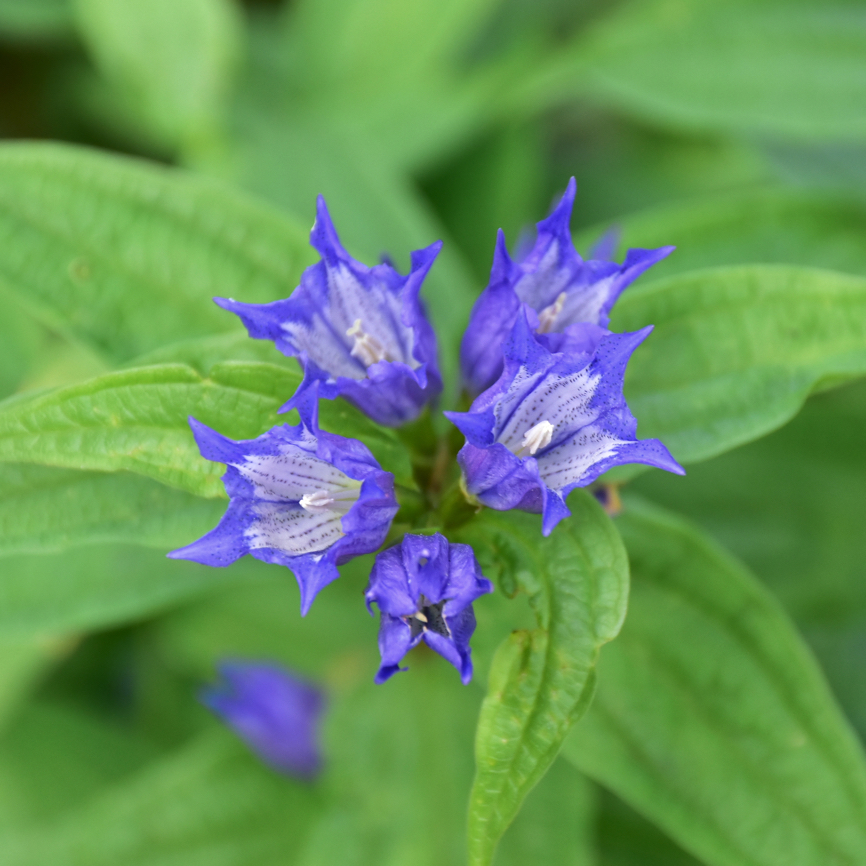
- COMMON NAME(S): Nettle-leaved Bellflower / Blue Devil Bellflower
- HARDINESS RATING: H7
- FLOWERS: Blue
- FLOWERING SEASON(S): Summer
C. trachelium boasts racemes of lavender-blue flowers reaching 3cm in length, making it incredibly easy on the eye.
Although the leaves resemble those of the stinging nettle it doesn’t actually sting, so don’t let the common name put you off this beautiful campanula species.
References
- 1The BRAHMS Project, University of Oxford, Department of Plant Sciences. (n.d.-d). Campanula species. Oxford University Plants. Retrieved March 13, 2023, from https://herbaria.plants.ox.ac.uk/bol/plants400/Profiles/cd/Campanula
- 2Campanula portenschlagiana: Adria Bellflower. (n.d.). NBN Atlas. Retrieved March 13, 2023, from https://species.nbnatlas.org/species/NHMSYS0000456767
- 3Campanula lactiflora. (n.d.). PFAF. Retrieved March 13, 2023, from https://pfaf.org/user/Plant.aspx?LatinName=Campanula+lactiflora
- 4Campanula sibirica. (n.d.). Kew Royal Botanic Gardens. Retrieved March 13, 2023, from https://powo.science.kew.org/taxon/urn:lsid:ipni.org:names:141096-1
- 5Campanula punctata. (n.d.). PFAF. Retrieved March 13, 2023, from https://pfaf.org/user/Plant.aspx?LatinName=Campanula+punctata

